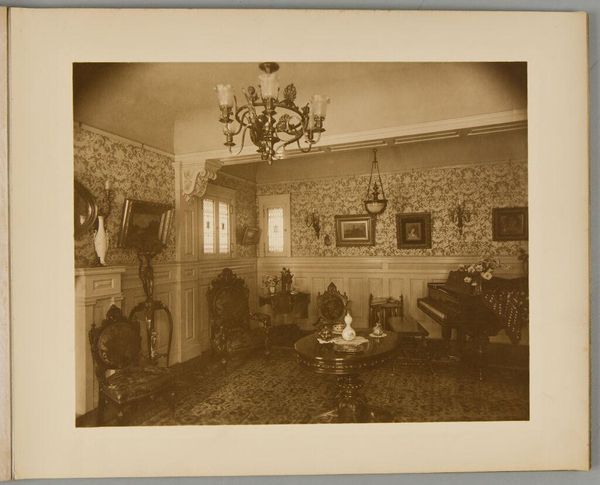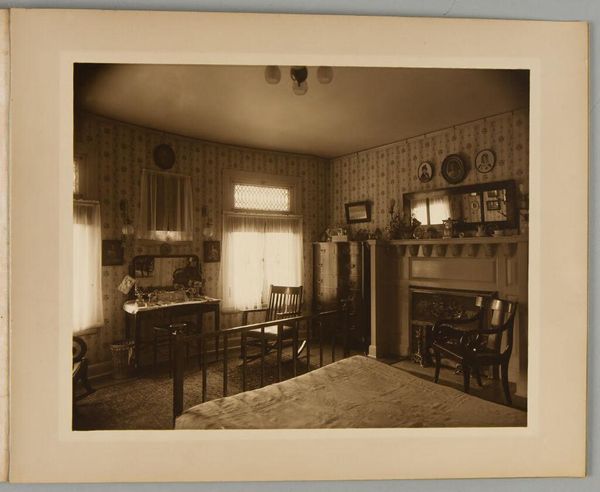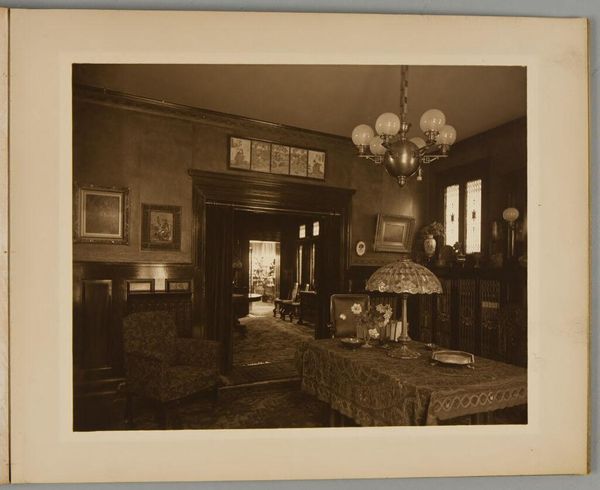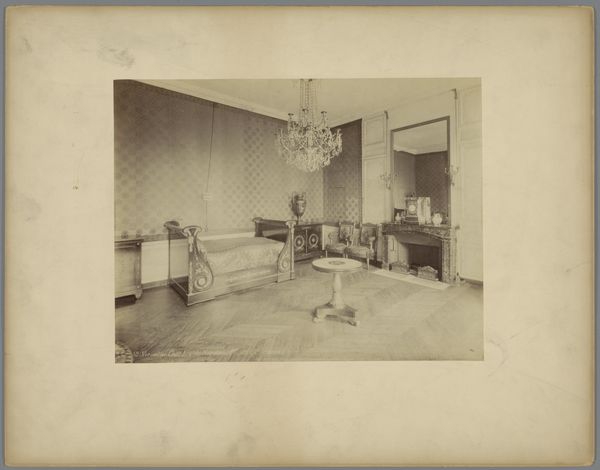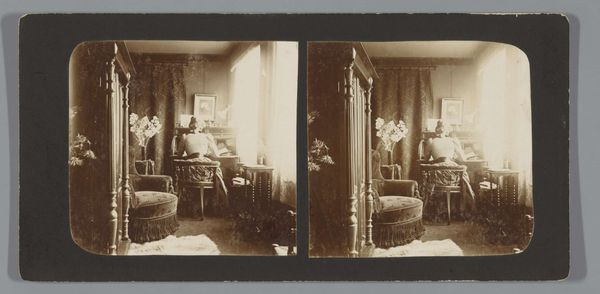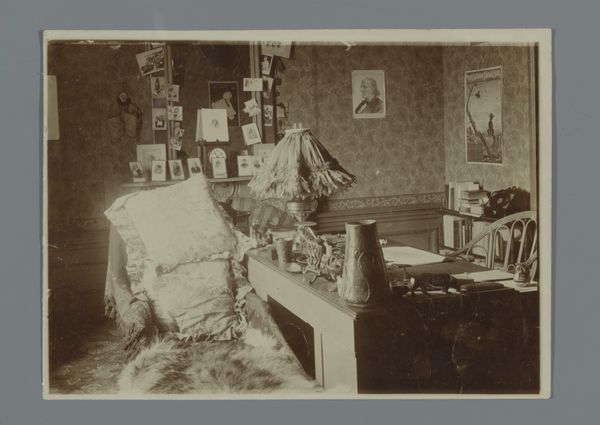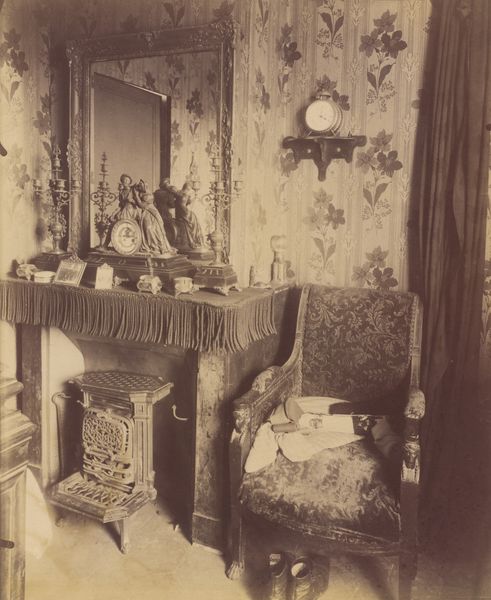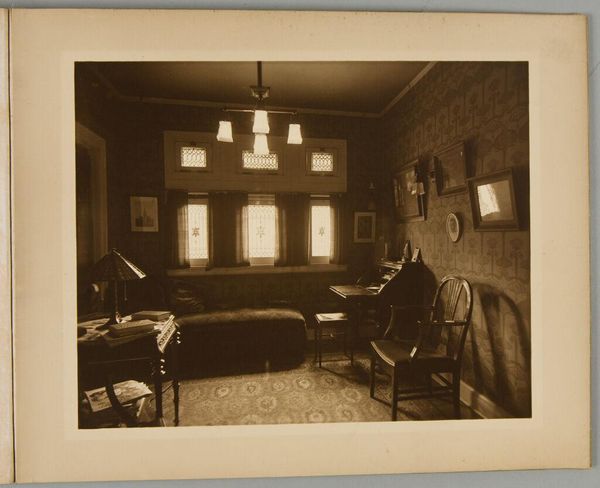
photography, gelatin-silver-print
#
portrait
#
16_19th-century
#
photography
#
gelatin-silver-print
#
united-states
#
genre-painting
Dimensions: 5.3 × 6.9 cm (image); 6 × 10.1 cm (card)
Copyright: Public Domain
Curator: Looking at this gelatin-silver print titled "Untitled (Woman in Interior of House)," created sometime between 1846 and 1899, what strikes you immediately? Editor: It feels…quiet. Like stepping into a room where someone has just left, or perhaps is still there, lost in thought. The light is subdued, almost melancholic. Is it just me? Curator: No, I see that. The photograph's composition directs our gaze inwards, leading us deeper into the depicted space. Consider how the arrangement of objects—the fireplace, the chair, the woman—establishes a visual rhythm. Editor: That chair is oddly angled and the empty basket tipped toward us in the front feels voyeuristic. What does the interior decoration tell us about this person’s inner life? I am curious why we don’t have any provenance. Was this commissioned or found? Curator: The lack of precise details on provenance certainly adds a layer of intrigue, forcing a focus on internal evidence: the formal elements within the frame. We might discuss the interplay between interiority and exteriority, how the woman’s placement within the house suggests both protection and confinement. Editor: Confinement yes—but isn’t every home also an opening? Look at how all the framed objects on the walls offer another view of seeing and the imagination and memory that go with seeing art. How does that fire shape her world inside those walls and her dreams, hopes, and fears. Curator: The materiality of the print itself, its tonality and texture, contribute to the overall mood. The gelatin-silver process captures detail with remarkable clarity, allowing us to analyze surfaces and spatial relationships minutely. Editor: To me it feels haunted not in a gothic or melodramatic way, but with that eerie familiarity you get from an old sepia toned family picture. Curator: Perhaps the emotional resonance stems from our ability to project ourselves onto the image. The very lack of specificity, of concrete biographical data, invites interpretation and empathy. Editor: A photograph is rarely objective proof and is always shaped through the photographer’s seeing… this image feels so close. Curator: Ultimately, its evocative power hinges on that balance—the interplay between what is presented and what is left unsaid. A fascinating study. Editor: Yes, something so delicate and ethereal about those half-seen rooms behind the figure is compelling and ultimately moving to me.
Comments
No comments
Be the first to comment and join the conversation on the ultimate creative platform.

